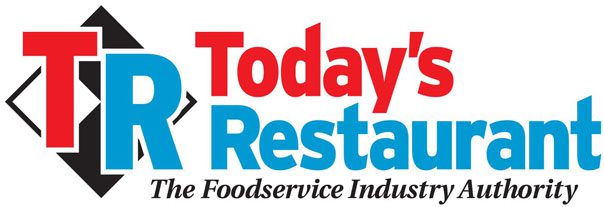
In Pandemic’s Wake Ghost and Virtual Kitchens Boom With Cost Re-Sets Ahead
By Zach Kuperman and Mark Lee
Ghost kitchens have saved the day for many Florida restaurants as the coronavirus pandemic has stretched out and enough patrons have opted for carryout given the risk of dining in.
The concept has a lot of variations, but Reef Kitchens in Miami has hit success with one formula, seeing exponential growth during the pandemic as a result. The company places mobile kitchens in underutilized urban spaces like parking lots, then enters licensing agreements with area restaurants to prepare their foods to exact specifications. When orders off the restaurant’s menu are placed through food delivery services like UberEats or GrubHub, they’ll likely be made at Reef.
For restaurants, ghost kitchens open the door to new urban points of distribution in a short period of time without the long-term financial commitment of brick and mortar and rent required by the traditional dining-in model. And customers get the quality food they want and expect – a lot faster.
Ghost kitchens were hot before the pandemic and the trend accelerated with it, running in parallel with the triple-digit, year-over-year surge in food delivery spend. In fact, ghost kitchens (by whatever manifestation) could become a $1 trillion segment of the global restaurant market by 2030, according to some estimates.
They are one of the bright spots that run counter to the doom and gloom you more typically hear from prognosticators over the outlook for the industry, one of the hardest hit by the COVID-driven downturn. Consider the grim numbers: by the end of 2020, more than 110,000 establishments had closed permanently or long-term as the industry looked at total losses that may reach $240 billion.
But numbers like that obscure the resilience of the business. Circumstances in 2020 pushed a re-set on a variety of fronts, giving reason for optimism for 2021 and beyond. While the industry does need to be wary of risks on the road ahead, there also are opportunities to thrive. In addition to ghost kitchens, here’s what to look for:
The re-set on costs
The reality is that we have been “over-restauranted.” Events of 2020 served to weed out the good and the bad operators. They also underscored the dangers of exceptionally slim margins averaging 3% to 5% that tend to characterize the business. But the outcomes are spelling a good opportunity to gain more wiggle room on the key costs that that have hobbled long-term success.
Paying 10%-plus of sales in rent is one factor that has kept the pressure on margins. But as lights went permanently out in numerous storefronts across the country, both new and surviving operators got much-needed leverage to negotiate better deals. Some larger brands have used conditions to get out of their leases all together. There’s also is a re-set underway in operator pay structure, as well. While mid- and high-end restaurants will always need wait-staff, many concepts are pivoting away from staff as they adopt more efficient models requiring fewer people. As a result, the restaurant business is getting better for employees (especially as labor became harder to get), with wages often surpassing the minimum $15 from wait-staff all the way up the line through the kitchen.
Third party deliveries and…what’s next?
You hear a lot about restaurants turning to delivery or carryout in order to keep the lights on. It’s made a big difference for many, though the reality is that it’s hard to build your own fleet. That means that third party delivery services like GrubHub and UberEats will continue to be hugely important to the industry moving forward – even after this pandemic, at least, is behind us. Restaurants have long been up arms over the boom in these services and their 30% take. On the other side of the equation, though, restaurants have some financial give, as many are saving on the wait staff costs. Plus, the transfer of risks inherent in delivery to third party services is another benefit not to be overlooked.
Delivery services are also instrumental in bolstering the growing trend toward virtual restaurants – the flip side of ghost kitchens. UberEats, for example, uses search data to identify unmet demand for different cuisine types, then going to local restaurants to help them use their own restaurant kitchens to create delivery-exclusive menus. That’s how Boca Raton’s Hugo Jiang added the virtual Boca Wings as a virtual “sister” to his brick and mortar Sieng House Restaurant. It’s a low-cost way to supplement revenues, especially during the COVID recovery.
Speaking of risks…
At some point in 2021 as vaccines become more available and make their way through the population, the industry will open up more extensively and start bringing staff back. One concern is a potential surge in outsized claims that are tracked back to on-the-job contagion. That could push financially stretched health insurers to subrogate them back to workers’ compensation carriers. If that happens, there’s a risk of double digit rate increases in workers’ compensation being triggered. Restaurants that have opened to dine-in at any capacity should also conduct risk assessments to audit their coronavirus safety measures, to ensure they meet or exceed Center for Disease Control guidelines. Restaurants should contact their brokers for this type of service and additional resources.
About the authors:
Zach Kuperman is SVP and the National Restaurant Practice Leader at Hub International, Zach has over 15 years of experience managing the insurance portfolios of 4000 restaurants across the country. His clients include leading national chains, large franchisees, local operators, celebrity chefs and private equity groups active in the industry. Beyond insurance placement, his day to day responsibilities include building out safety programs and risk management platforms that make both the employee workplace and guest experience a safer environment. He frequently speaks at restaurant conferences across the country on topics that include alternative risk, workers’ compensation and new technologies that are changing the way restaurants interact with their employees and customers.
Mark Lee is a Risk Consultant for Hub International. He serves as a resource for brokerage operations by providing risk management consulting services and carrier risk control oversight to commercial property and casualty clients. He has over 5 years of experience in risk control consulting. In this role, he develops and implements solutions in the areas of risk mitigation, employee and customer safety, emergency management, regulatory compliance, claims management, and reconstruction cost valuations.





Recent Comments